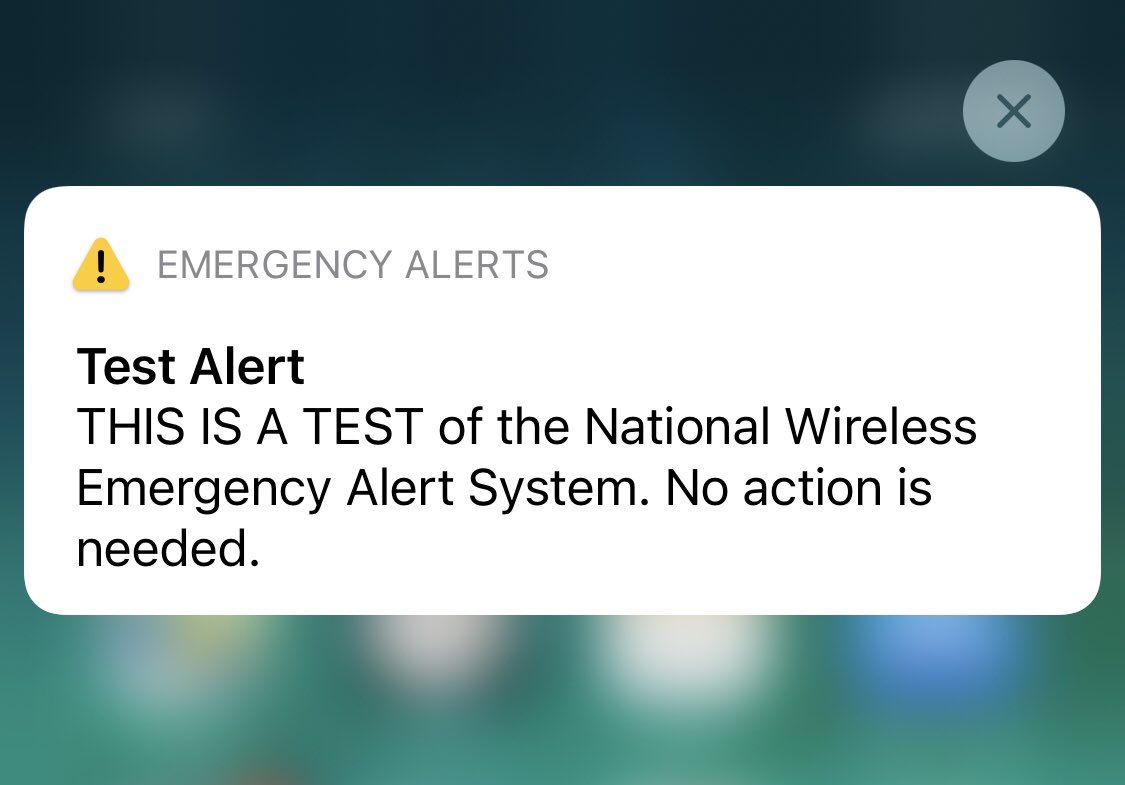In an age where information travels at the speed of light, how can we ensure that critical alerts reach every citizen, even when the unexpected strikes? The Emergency Alert System (EAS) stands as a crucial lifeline, designed to disseminate vital information during times of crisis.
The EAS acts as a crucial communication pathway, broadcasting essential information directly to radio and television carriers. This system is not just limited to national emergencies; it can also be utilized by local authorities, such as counties, to broadcast alerts during widespread events affecting their communities. The EAS is a national warning system, designed in the United States to ensure authorized officials can broadcast emergency alerts and warning messages to the public via cable, satellite, and broadcast television, as well as AM, FM, and satellite radio. The city of Los Angeles, for instance, leverages its own system, using Notifyla to send emergency alerts via phone, email, or text, showing the initiative of the authorities.
Subscribing to these alerts is highly encouraged, to stay informed about emergencies that may occur in your neighborhood, in schools, in businesses, and in any other important locations to you. The Federal Communications Commission (FCC) regulates the participants, procedures, and tests of the EAS, ensuring that the system remains effective and reliable. It also provides resources and archives of the system.
- Ewr Airport Code What Does It Stand For Facts Info
- Who Are Jesse Williams Parents Meet Johanna Chase Reginald Williams
Local radio and television stations, the participants of the EAS, work to communicate warnings. In many cases, these stations continue to operate even when other methods of alerting the public are unavailable, providing a crucial layer of resiliency to the suite of tools available for emergency communication. The EAS was designed with a crucial purpose: in 1997, to give the President the ability to address the American people in a national emergency.
The Emergency Alert System (EAS) is a sophisticated network. Its core function, as a national warning system, is to broadcast emergency alerts through various channels, including television, radio, and satellite. The EAS is a key component of IPAWS. It relies on broadcasters, cable TV, wireless cable systems, satellite, and wireline operators. These organizations act as the stewards of EAS, working with alerting officials at all levels of government.
| Topic | Details |
|---|---|
| System Name | Emergency Alert System (EAS) |
| Purpose | To broadcast emergency alerts and warning messages to the public. |
| Channels | Cable, satellite, broadcast television, AM/FM radio, satellite radio. |
| Primary Users | Authorized officials (e.g., President, state and local authorities) |
| Key Functionality | Interrupting radio and TV broadcasts to deliver emergency information. |
| Regulatory Body | Federal Communications Commission (FCC) |
| Implementation Year | 1997 |
| Predecessor System | Emergency Broadcast System (EBS) |
| Event Codes | Various event codes are used for different types of emergencies, as defined in state and local plans. |
| Protocol Used | Specific area message encoding (SAME) protocol, developed by the U.S. National Weather Service |
| Common Alert Types | Weather alerts, Amber Alerts, and other public safety warnings. |
| Participants | Radio and TV broadcasters, cable TV, wireless cable systems, satellite and wireline operators. |
| Resilience | Radio and TV stations often continue operating when other communication methods fail. |
| Notable Incidents | In 2013, several stations in Montana and Michigan were hijacked with local emergency messages. |
| Reference | FCC Official Website |
The Specific Area Message Encoding (SAME) is an important part of the EAS. This protocol is used for framing and classification of broadcasting emergency warning messages. It was developed by the United States National Weather Service for use on its NOAA Weather Radio (NWR) network, and was later adopted by the Federal Communications Commission for the emergency alert system. Environment Canada has adopted the use of this too.
- Alix Tichelman Latest Updates Developments You Need To Know
- Valvoline Coupons Deals May 2025 Save On Oil Changes
The National Weather Service often issues warnings, as weather events are one of the common causes of emergencies. For example, the National Weather Service in [Town/City] issues a tornado warning for [County in Area of a State] for example, Cumberland County in south central Pennsylvania. The alerts detail specifics, such as the time of the warning and the location of the threat. Alerts often start "at [starting time], base: A severe thunderstorm capable of producing a tornado was located [either over, or x miles (direction) of town/city."
The evolution of the EAS reflects the need to adapt and improve the way we inform the public in emergencies. This evolution started in 1997 when the EAS was implemented, as it superseded the Emergency Broadcast System (EBS). The EAS is activated through the collaboration of different parties and organizations. NWR and the EAS use identical digital protocols. NWS uses weather radio as its primary means to activate EAS. All event codes are operational, unless a different announcement is made. On February 11, 2013, a series of unfortunate incidents occurred, several stations in Montana and Michigan were hijacked with a local area emergency message displaying a warning of a zombie apocalypse. The first of these hijackings occurred between 2:30 and 2:33 pm MST, affecting stations like KRTV channel 2 and 3 and several PBS affiliates.
It is crucial for the authorities to keep the public informed and to keep the system safe, secure and running effectively.



Detail Author:
- Name : Clifton Schaefer I
- Username : tjohnston
- Email : zhamill@crona.com
- Birthdate : 1983-08-05
- Address : 85267 Schinner Orchard Suite 956 Port Vincent, IL 15061-2827
- Phone : 323-496-8334
- Company : Greenholt Inc
- Job : Medical Sales Representative
- Bio : Perspiciatis cum nihil cum non quis minima. Libero placeat fugiat quia iure harum ex quod. Dolor alias aperiam earum vel aliquam quam corporis fugiat. Rerum corrupti aut ut recusandae qui ea.
Socials
facebook:
- url : https://facebook.com/riley.oberbrunner
- username : riley.oberbrunner
- bio : Aut magni id dolorum consequatur quaerat dolores. Quidem doloribus quis ea et.
- followers : 5122
- following : 1080
twitter:
- url : https://twitter.com/oberbrunnerr
- username : oberbrunnerr
- bio : Ipsum eveniet sint id et sit at sunt. Vel debitis quia veritatis non aut et. Sapiente minus veniam optio pariatur.
- followers : 4985
- following : 750
instagram:
- url : https://instagram.com/rileyoberbrunner
- username : rileyoberbrunner
- bio : Explicabo eos eum natus esse. Rerum aut quam sunt placeat et.
- followers : 3344
- following : 836